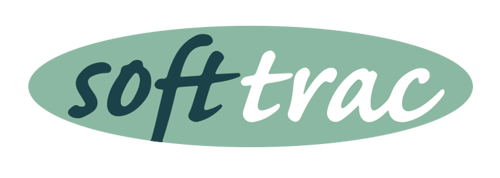 Abila recently released their Nonprofit Finance and Fundraising Collaboration Study - Opportunities for a More Collaborative Nonprofit ›. With more than half of fundraisers (55%), and close to half of finance staff (45%) indicating the relationship between these two groups is not collaborative, there is room to improve and strengthen the dynamic. Abila's study outlined recommendations on areas where improvements can be made, and through our new blog series, " Finance and Fundraising Working Together", we will expand on each of the recommendations.
Abila recently released their Nonprofit Finance and Fundraising Collaboration Study - Opportunities for a More Collaborative Nonprofit ›. With more than half of fundraisers (55%), and close to half of finance staff (45%) indicating the relationship between these two groups is not collaborative, there is room to improve and strengthen the dynamic. Abila's study outlined recommendations on areas where improvements can be made, and through our new blog series, " Finance and Fundraising Working Together", we will expand on each of the recommendations.
Recommendation Five | Make time for each other
Break down those department silos. Schedule regular joint meetings, or invite your finance/fundraising counterparts to sit in on one of your department’s weekly or monthly meetings. Take time for some just-for-fun lunches and other opportunities to get to know each other.
Part of collaboration and working with other people is spending time together so that you can learn to communicate with one another as well as define and reinforce your shared goals. It is part of the relationship building process and how you learn to have a deeper understanding of one another.
Spending time together can be achieved in a variety of ways from more formal approaches such as regularly scheduled meetings, to more informal social gathers such as pizza Fridays.
Below are some tips to keep in mind on how you can make meetings with both departments productive and collaborative.
Co-Lead the meetings with a leader from each department; Or, alternate who leads the meetings and have representatives from each department take turns.
Be sure to prepare and distribute an agenda ahead of time. Part of the agenda prep can include soliciting input from both departments for topics that they would like to see covered during the meeting.
Have staff from each department take ownership of those agenda items that are relevant to them. Be sure to get representation from both groups, and vary who participates
Leave some time for Q&A and discussion on other priority items that might come up during or leading up to the meeting. Don’t have the agenda so loaded that you don't have time to address critical issues.
Remember to distribute the meeting notes to everyone and highlight required follow up on any action items
In addition to the tips outlined above, here are a few final thought some good meeting best practices that might be helpful.
- Have a Solid Start and Stop Time
- Ban all Electronics
- Set a Standing Time
- Distribute Calendar Invites
While shared meetings are a more formal approach to making time for one another, you can always add fun activities on occasion to help create a relaxed, collaborative environment. We once had a hula-hoop session at the end of one of our Customer Advisory Board › meetings. One of our CAB Members, who was an instructor, shared her hula hoop knowledge with the group. It was a lot of fun!
And, in addition to incorporating more light hearted moments into some of your formal meetings, you can also plan other social activities for the departments as another way to spend time together. Maybe you have a monthly social where lunch is brought in from a local restaurant, or you setup a weekly yoga session. Whatever people will be comfortable participating in at your organization is a good place to start. Just remember to plan and schedule time with one another. While informal gatherings are great and have been a staple of the work force for decades, sometimes you need a regular schedule of activities and a pre-planned agenda to be sure everyone is on the same page.
A couple of parting thoughts...
- Not all time spent together has to be physically together. There are a variety of ways that virtual teams and groups located in different areas can still spend time together working towards shared goals by utilizing many of the wonderful virtual meeting tools that exist today.
- Along the lines of these virtual tools, be sure the meeting steps outlined above such as defining the agenda and distributing your meeting notes utilizes a strong collaborative tool to make these steps more effective. Everyone's e-mail inbox is overloaded these days, so using the right tool can really make a difference and make the process more successful.
Soft Trac is a woman-owned business and accomplished team of nonprofit software consultants. We believe in making nonprofits "do good" better. For more information on any of the topics discussed in this blog or to learn more about the software products and services we offer, please visit our CONTACT page.













